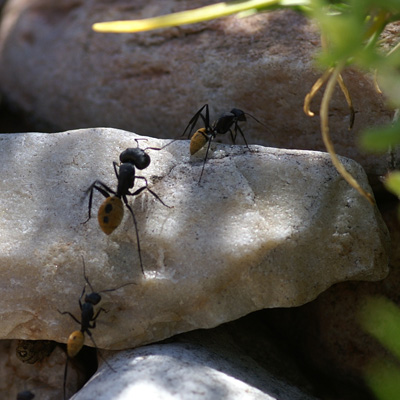Ant diversity in South Africa
South Africa is well known for its spectacular biodiversity. However, it is mostly the plant diversity of the Cape Floristic Region or the large mammals that capture people's interest. Much less is known about the diversity of invertebrates, despite their important roles in ecosystem functioning. For example, ants are important as soil ecosystem engineers and as dispersers of seeds of many South African plant species. Still little is known about many ant species and it is estimated that 50% of them are not yet known to science. Therefore, I examine ant diversity in a range of projects. Of special interest is the distribution of traits such as body size, colour, and thermal limits to movement, which may help explain the species composition in local assemblages and the ranges of species.
Publications
Janion-Scheepers C, Measey J, Braschler B, Chown SL, Coetzee L, Colville JF, Dames J, Davies AB, Davies S, Davis A, Dippenaar-Schoeman AS, Duffy GA, Fourie D, Griffiths C, Haddad CR, Hamer M, Herbert DG, Hugo-Coetzee EA, Jacobs A, van Rensburg CJ, Lamani S, Lotz LN, vdM Louw S, Lyle R, Malan AP, Marais M, Neethling J-A, Nxele TC, Pliskor DJ, Prendini L, Rink AN, Swart A, Theron P, Truter M, Ueckermann E, Uys VM, Villet MH, Willows-Munrow S & Wilson JRU (2016) — Soil biota in a megadiverse country: current knowledge and future research directions in South Africa — Pedobiologia 59: 129–174
Bishop TR, Robertson MP, Gibb H, van Rensburg BJ, Braschler B, Chown SL, Foord SH, Munyai CT, Okey I, Tschivhandekano GP, Werenkraut V & Parr CL (2016) — Ant assemblages have darker and larger members in cold environments — Global Ecology and Biogeography 25: 1489–1499
Braschler B, Chown SL & Gaston KJ (2012) — The Fynbos and Succulent Karoo Biomes do not have exceptional local ant richness — PLoS ONE 7: e31463
![]()

![]()